The joy of working-from-home lunches: How will we ever face an office microwave again?
Returning to the office is at the top of everyone’s minds. Kate Ng recalls her favourite part of working from home - the superior lunch

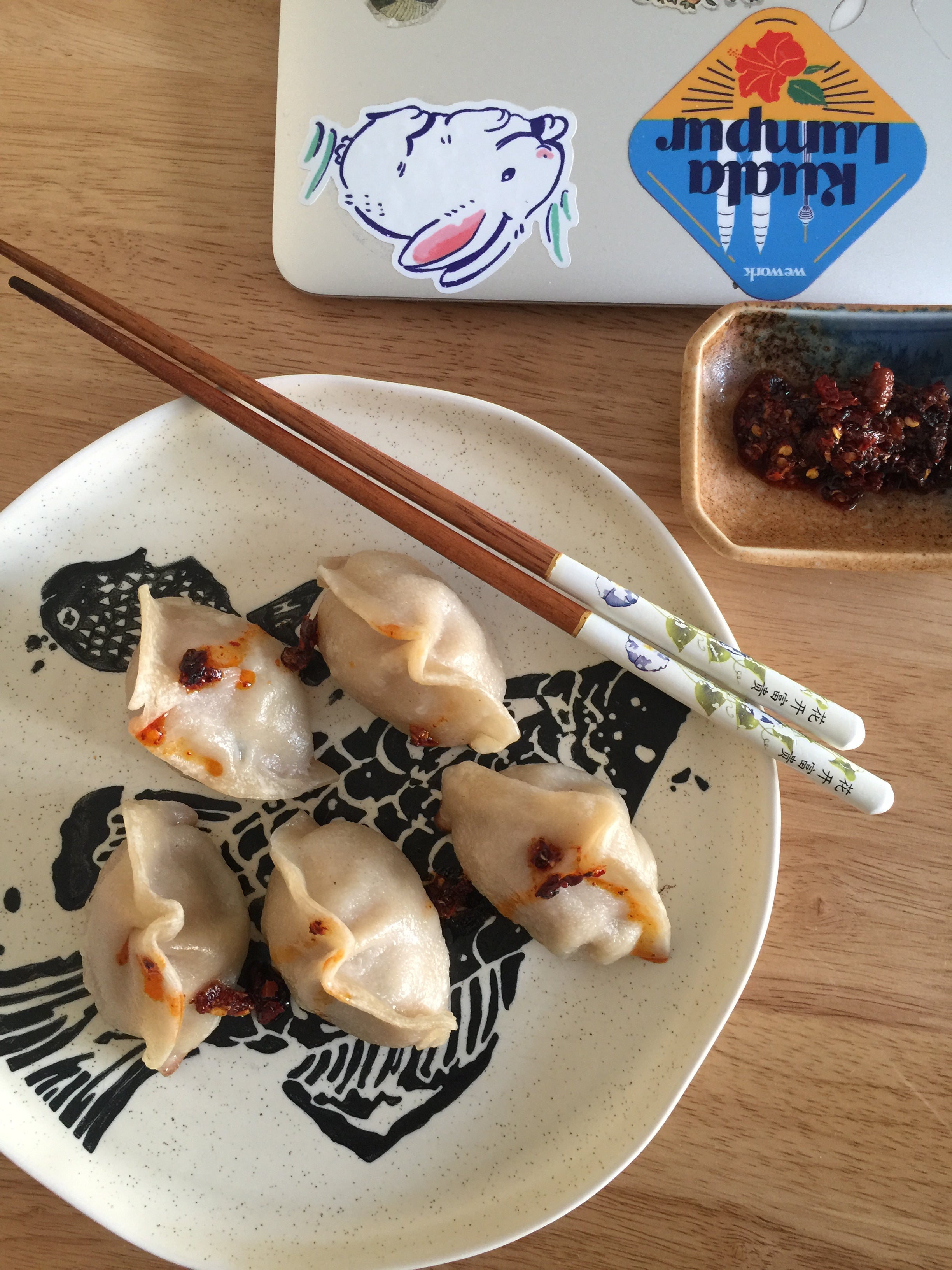
Your support helps us to tell the story
From reproductive rights to climate change to Big Tech, The Independent is on the ground when the story is developing. Whether it's investigating the financials of Elon Musk's pro-Trump PAC or producing our latest documentary, 'The A Word', which shines a light on the American women fighting for reproductive rights, we know how important it is to parse out the facts from the messaging.
At such a critical moment in US history, we need reporters on the ground. Your donation allows us to keep sending journalists to speak to both sides of the story.
The Independent is trusted by Americans across the entire political spectrum. And unlike many other quality news outlets, we choose not to lock Americans out of our reporting and analysis with paywalls. We believe quality journalism should be available to everyone, paid for by those who can afford it.
Your support makes all the difference.If I close my eyes, I can picture the office kitchen. I can see the two large fridges flanking either side of the entrance, the two canteen-style tables, the perpetually-full sink that routinely gets clogged. And then, the three communal microwaves.
Ah, the office microwave. The queues, the smells, the mysterious stains and discarded bits of lunch left inside, the rising anxiety as someone hovers behind you. Using one is such a ubiquitous experience, inspiring numerous jokes, sketches, and memes. It’s also – aside from the commute – the thing I am dreading most about facing when I go back to the office.
One of the best things about working from home is being able to make lunch. It doesn’t even have to be from scratch. It can be as simple as adding a freshly fried egg to last night’s leftovers, or building up a sandwich using vegetables that are still crisp from the fridge.
Today I reheated leftover jasmine rice, added a hot egg and fried slices of spam, doused it in homemade spring onion and ginger oil and chilli crisp. It was incredible. I would never be able to get this same result using the office microwave, and that makes me despair.
A quick survey on social media showed a similar sentiment among other work-from-homers. Some people said they would miss being able to cook fresh food for lunch if they had to go back to the office full-time, while others said it was the routine of making lunch that was important to them.
Many also enjoyed the opportunity to be more creative with their dishes. Rachael Narins, author of Cast-Iron Cooking, told The Independent: “I’ve gone wild with my lunches since I started working from home and really do take as much time as I want to prepare something every day. It’s self-care. My go-to is soup but I’ve really enjoyed just finding new things to try. My cookbooks are finally being used.”
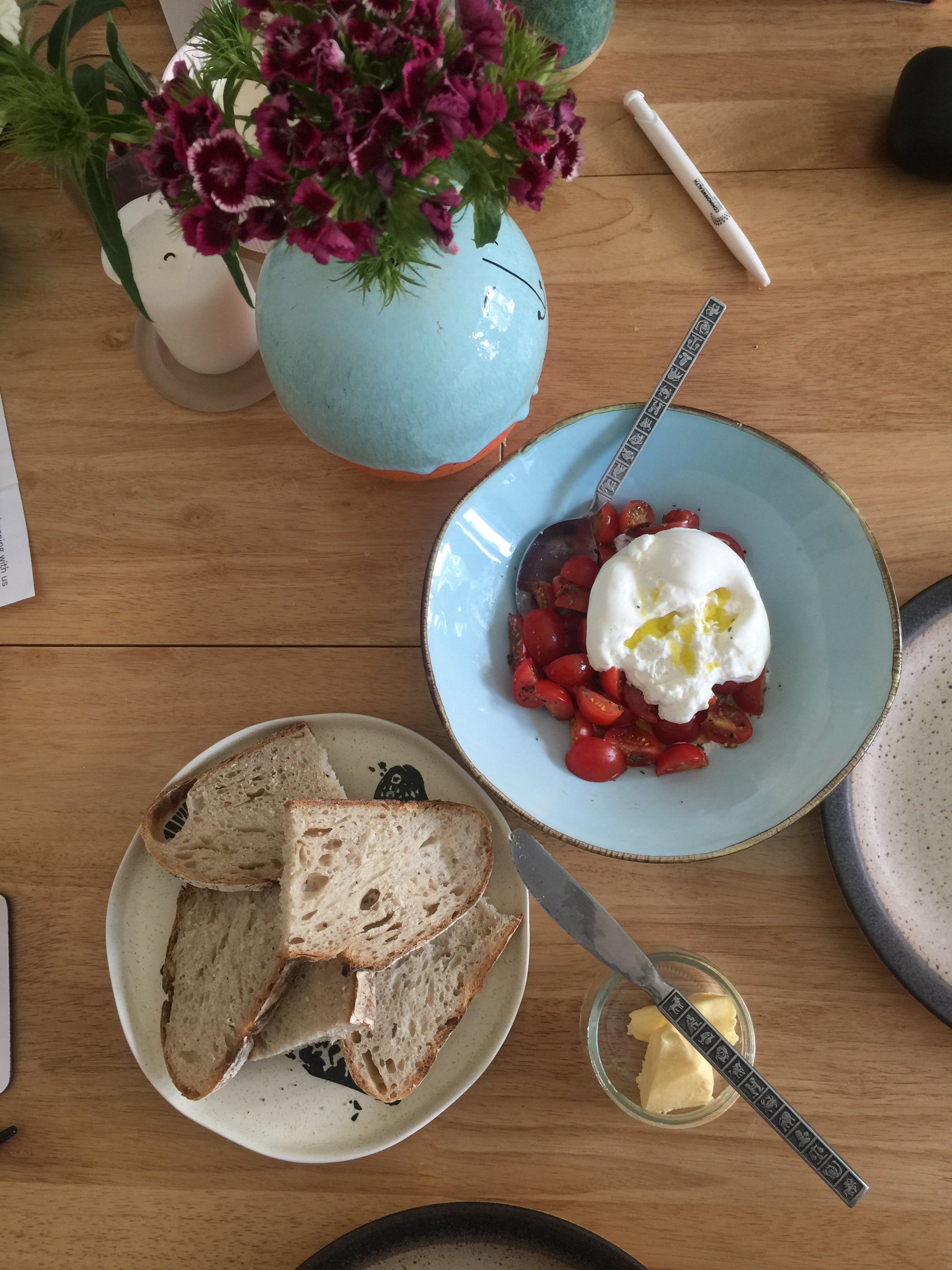
Not only does microwaving limit the variety of foods we can eat, but heating in a microwave also changes the texture and flavour. It becomes dry and in some cases, mushy, making it a thoroughly unsatisfactory experience all round.
Even science says that microwaves are an inferior method of heating food and liquids. Research published in the journal of AIP Advances examined the way microwaves heat liquid and identified the significant problem of “non-uniform temperature distribution”.
That would explain why the top layer of my microwave-reheated pasta is always boiling hot, but the middle remains cold or worse, lukewarm.
Of course there are ways to avoid using the microwave at work, but that usually means having to purchase a meal deal or shelling out more money for a hot meal.
Regardless of whether you used to buy lunch everyday or every other day while working in the office, many people are saving between £5 and £15 with each lunch made at home. These savings may seem small, but they certainly add up and have made a difference to monthly disposable incomes.
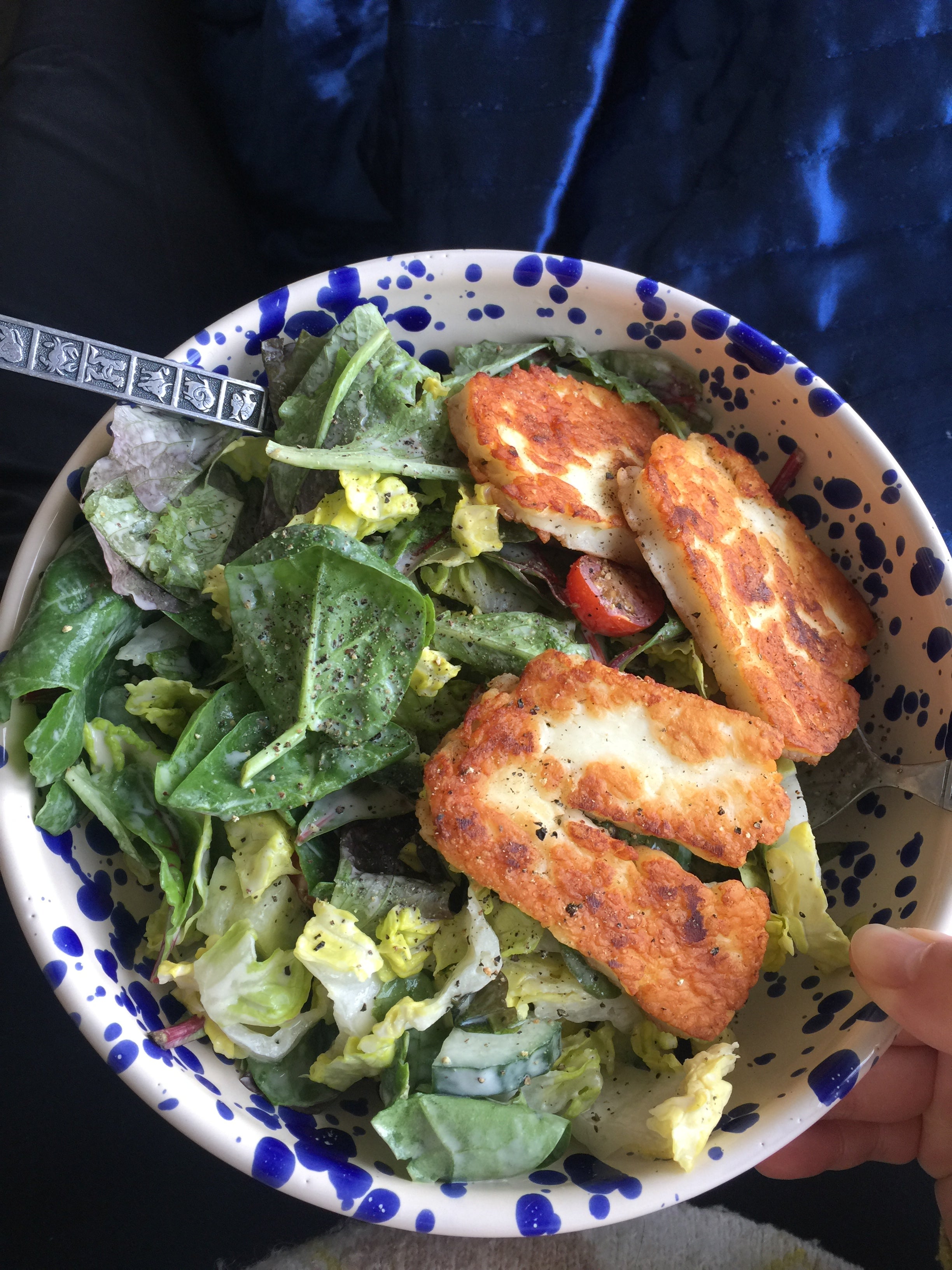
Of course, it hasn’t always been great. Some days it’s a struggle to think of what to feed yourself; others, the thought of facing another pile of dishes that need washing is too much to bear. But the beauty of the WFH lunch is that when you are in the mood for it, it can become the thing that makes your day sing. It might just be a small part of the day, but a really good lunch can improve your mood and fuel the rest of your working day.
As lockdown lifts and we face a potential exodus back to the office, I will sorely miss the work-from-home lunch. Goodbye, delicious hot fried egg, and hello again, soggy salad. How I haven’t missed you.
To celebrate the humble WFH lunch, we asked five chefs and cookbook authors to share their go-to lunches during lockdown:
Ping Coombes: Coconut Dhal with Curried Roasted Cauliflower and Chilli Oil
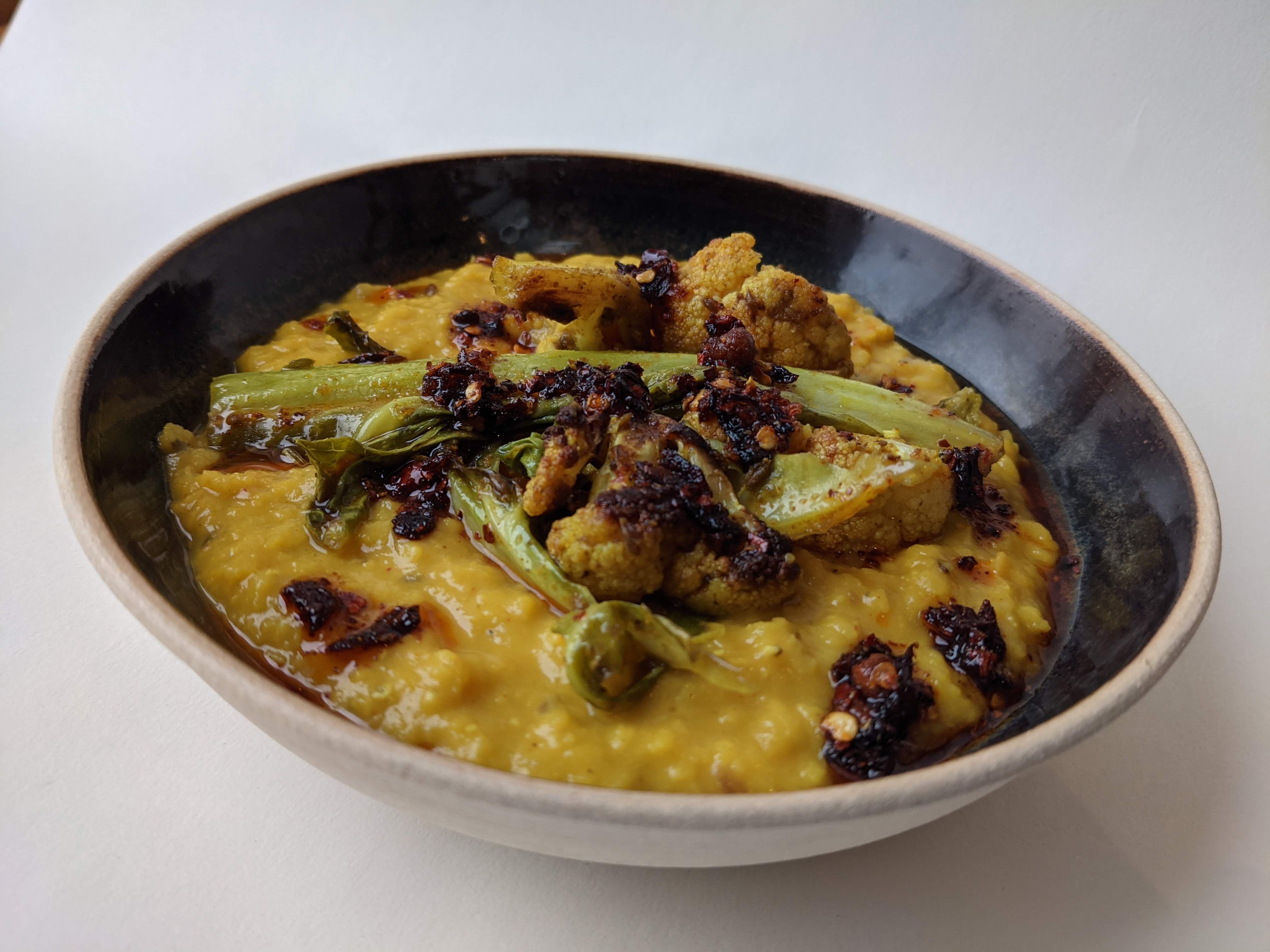
Ingredients:
For the dhal:
200g red lentils
1/2 tsp turmeric
1/2 tsp chilli powder
1 tsp salt
300g water
400g full fat coconut milk
Large sprinkling of crispy onions
For the cauliflower
1/2 cauliflower and leaves
1 tbsp curry powder
1 tsp cumin seeds
1 small onion, chopped
2 tbsp vegetable oil
Place the lentils in a medium saucepan along with the turmeric, chilli powder, salt, water and coconut milk. Bring it to a boil and then lower the heat to let it simmer while stirring often. Simmer and stir for 20 minutes until the lentils are creamy and tender.
Meanwhile, preheat the oven to 200C. Mix the cauliflower florets and leaves with the vegetable oil, curry powder, cumin seeds and onions on a baking tray and roast for 10 to 15 minutes. Season with some sea salt.
Top the dhal with the roasted cauliflower, greens, crispy onions and chilli oil of your choice.
Jeremy Pang: Chilli Oil Soup Noodles
Some dishes like this just need to be simple. Having soup noodles with lashings of chilli oil for breakfast is a thing in Hong Kong. I love it any time of day, as it’s a great wakeup call from a full day of working from home. It’s light but fiery and will keep you going all afternoon.
Ingredients:
Rice vermicelli/Mung Bean vermicelli
1/2 bowl mixed salad leaves
500ml vegetable or chicken stock bag
2 tbsp vegetable oil
1 egg (optional)
Coriander leaves to garnish
The Chilli Oil
1/2 spring onion, sliced thinly
2-3 garlic cloves, finely chopped
1/4 thumb-sized piece of ginger, finely chopped
1 tbsp chiu chơw chilli oil (the paste at the bottom of the jar, not the oil)
1 tbsp light soy sauce
1/2 tsp dark soy sauce
1 tsp ready toasted sesame seeds
Prepare by mixing the ingredients for The Chilli Oil in a serving bowl and organise your prepared ingredients on a round plate, called a Wok Clock. Start with the salad leaves, stock, noodles, the egg (if using) and coriander.
Heat the vegetable oil in a wok on high heat until smoking hot. Pour the hot oil over the top of The Chilli Oil ingredients and give it a stir. Place the salad leaves on top.
Bring the stock to a boil in a saucepan, then add the noodles and boil for 2-3 minutes. Remove the noodles from the stock with a slotted spoon and tip into the bowl over the salad leaves.
If you are using an egg, maintain a rolling boil on the stock. Crack the egg in carefully and then turn the heat down low and poach the egg for 3 minutes. Remove with a slotted spoon and place on top of the noodles.
Pour the stock over the noodles and garnish with a generous handful of coriander leaves before eating.
Budgie Montoya: Beef Longanisa
Ingredients:
250g beef mince
80g of sugar
4 cloves of garlic, finely minced
1 tbsp soy sauce
1 tbsp cane or coconut vinegar (any vinegar is fine)
1 tsp salt
1 tsp white pepper
1 tsp annatto/achuette powder (optional)
1 piece of parchment paper, 15cmx10cm
1 tbsp vegetable oil
Put all the ingredients except the parchment paper and the oil into a bowl and mix until well combined. Then place the parchment paper on the bench and put one heaped tablespoon of the sausage mix into the middle. Use the paper to shape the sausage into a tight cylinder.
Place the sausage on a plate and repeat until all the meat mixture is used up. Place all the sausages in the fridge to firm up for 30 minutes. Then cook the sausages in a pan on medium heat with a drizzle of oil.
Rachael Narins: Cherry tomato and fennel soup
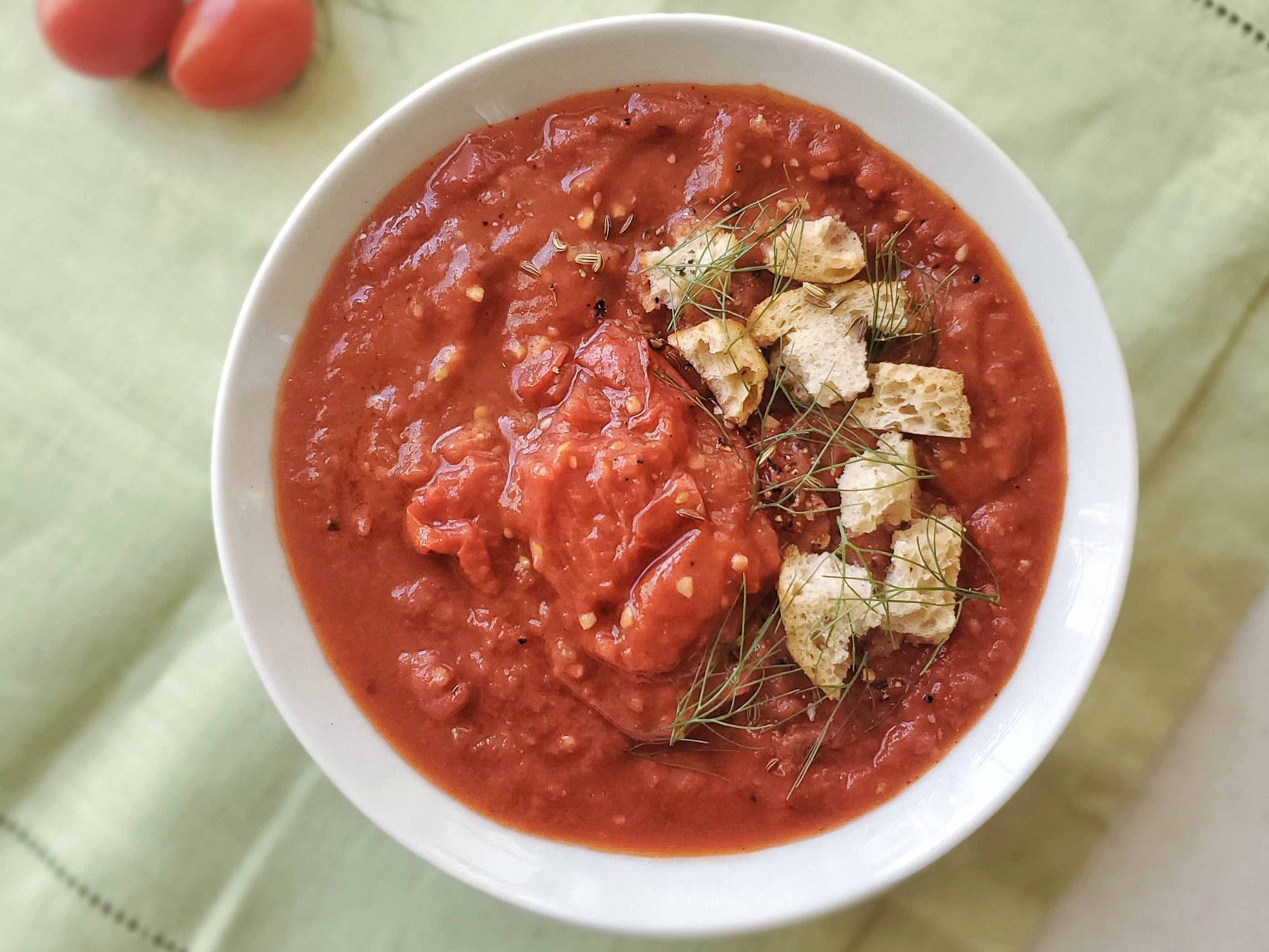
This is a simple, vegan soup that packs a lot of flavour. It’s also a great canvas for playing with. You can add pasta, quinoa, parmesan, white beans or anything else that sounds good to you. It can be served warm or chilled and comes together in a snap.
Ingredients:
2 tbsp olive oil, plus more as needed
600g cherry tomatoes
1 large bulb of fennel, chopped. Reserve the fronds
2 tbsp fennel seeds, divided
4 cloves of garlic, roughly chopped
800g tomato puree
57g tomato paste
1 tbsp red wine vinegar
1/2 baguette, torn into bite-sized pieces
Kosher salt, black pepper and sugar, as needed
Preheat your oven to 180C, or gas mark 4. Lightly oil a baking sheet and set them aside.
Rinse the cherry tomatoes and place them in a bowl. Using a small paring knife, pierce each one a few times. This makes it easier for them to burst while cooking.
In a large saucepan over a medium flame, heat two tablespoons of olive oil. Add the cherry tomatoes and stir to coat, then reduce the flame to low. Cook until the tomatoes are soft and starting to burst, smashing them with a spoon as they soften, around 3 minutes.
Stir in the fennel, 1 tbsp of fennel seeds and chopped garlic. Raise the heat to medium and continue cooking for another 4 minutes, or until the fennel has softened. Stir in the tomato puree, tomato paste and vinegar, season with salt and simmer for 10 minutes.
Meanwhile, toss the baguette pieces in a large bowl with a generous amount of olive oil and a large pinch of salt to coat. Then arrange in a single layer on the baking sheet and toast in the oven for five minutes. Rotate the pan and toast for another four minutes, or until they’re just starting to brown. Remove from the oven and let cool.
Taste the soup and add salt or sugar to taste. Serve in bowls topped with the croutons, additional fennel seeds and some fennel fronds.
Asma Khan: Vegetable Pulao
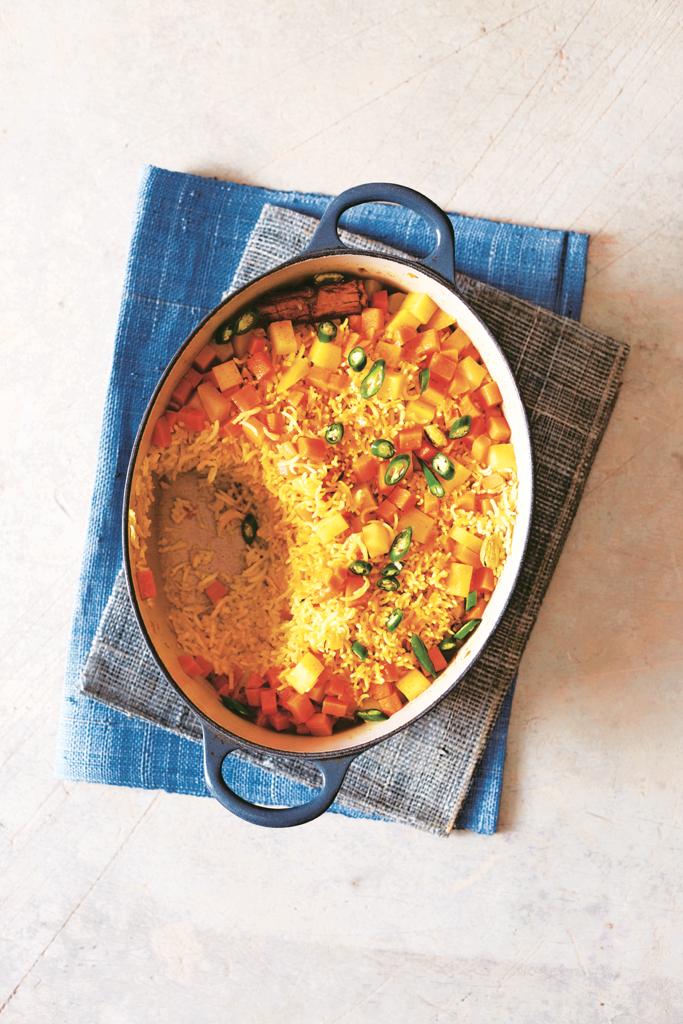
Over the lockdown one of the things we had a stock of was rice. When the lockdown was called I took a bag of rice home from the restaurant and I made tehri very often! I used random vegetables I had- sometimes frozen vegetables and peas. By changing the vegetable bits I added to this vegetable Pulao – it tasted different every time! This recipe is from Asma Khan’s cookbook, Asma’s Indian Kitchen.
Ingredients:
225g/8 oz/1 1/4 cup basmati rice
2 tbsp vegetable oil
1 2cm/3/4 inch-long piece of cassia bark
2 green cardamom pods
1 small white onion, finely chopped
1/2 tsp garlic paste
1/2 tsp fresh ginger paste
1/2 tsp ground turmeric
1/4 tsp chilli powder
75g/1 1/2 oz potatoes, peeled and cut into 1cm cubes
50g/1 3/4 oz carrots peeled and cut into 1cm cubes
1/2 tsp salt
Fresh green chillies, sliced to garnish
Wash the rice in several changes of cold running water until it runs clear, then place in a bowl and soak for 30 minutes in fresh cold water.
In a heavy-based pan that has a lid, heat the oil over a medium heat. Add the cassia bark and cardamom pods to the oil, then stir for a few seconds. Add the onion and cook, stirring, until it starts to colour. Keep stirring to prevent the onions from sticking to the base of the pan.
Once the onions start to brown, add the garlic and ginger pastes and after one minute, add the ground turmeric and chilli powder. Cook, stirring, for 10 to 20 seconds or until the “raw” smell of turmeric disappears, taking care not to let the ground spices burn.
Add the potatoes and carrots, plus any other vegetables. The water content in the vegetables should add sufficient moisture, but if the mixture sticks to the pan, add a splash of water. Cook everything for at least five minutes to seal them in the oil, which will prevent them from disintegrating when cooked with the rice. The vegetables should be glistening and the potatoes starting to catch along their edges.
Put the kettle on to boil. Add the soaked rice and salt to the pan. Stir for one minute to coat the rice in the spices, then cover with 900ml/30 fl oz/3 1/4 cups boiling water from the kettle. Cook uncovered over a medium heat until the water has been almost absorbed, about four minutes.
Cover the pan with the lid, lower the heat and simmer for a further 15 to 20 minutes, resisting the temptation to open the lid. After 20 minutes, check the rice – there should be no liquid at the edges of the pan – and gently run a fork through to lift and separate the grains.
Replace the lid, remove from the heat and leave for five more minutes to allow any remaining moisture to be absorbed. Serve garnished with sliced fresh green chillis.
Join our commenting forum
Join thought-provoking conversations, follow other Independent readers and see their replies
Comments